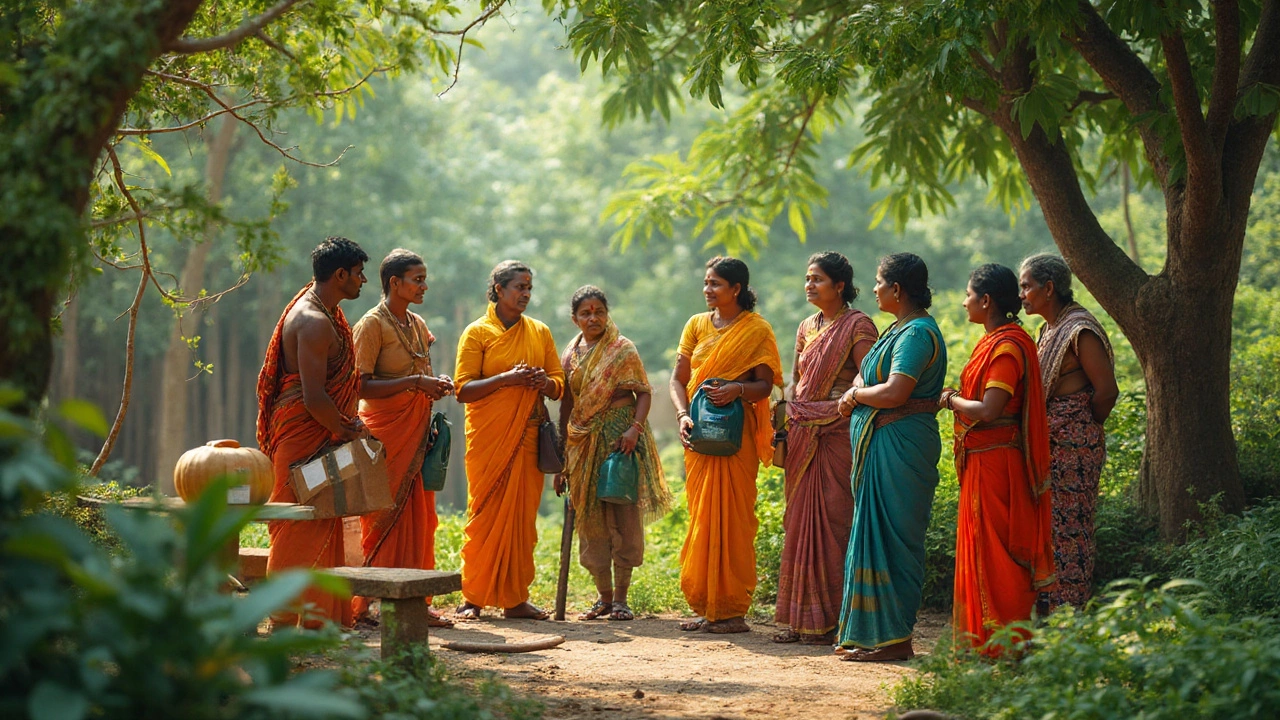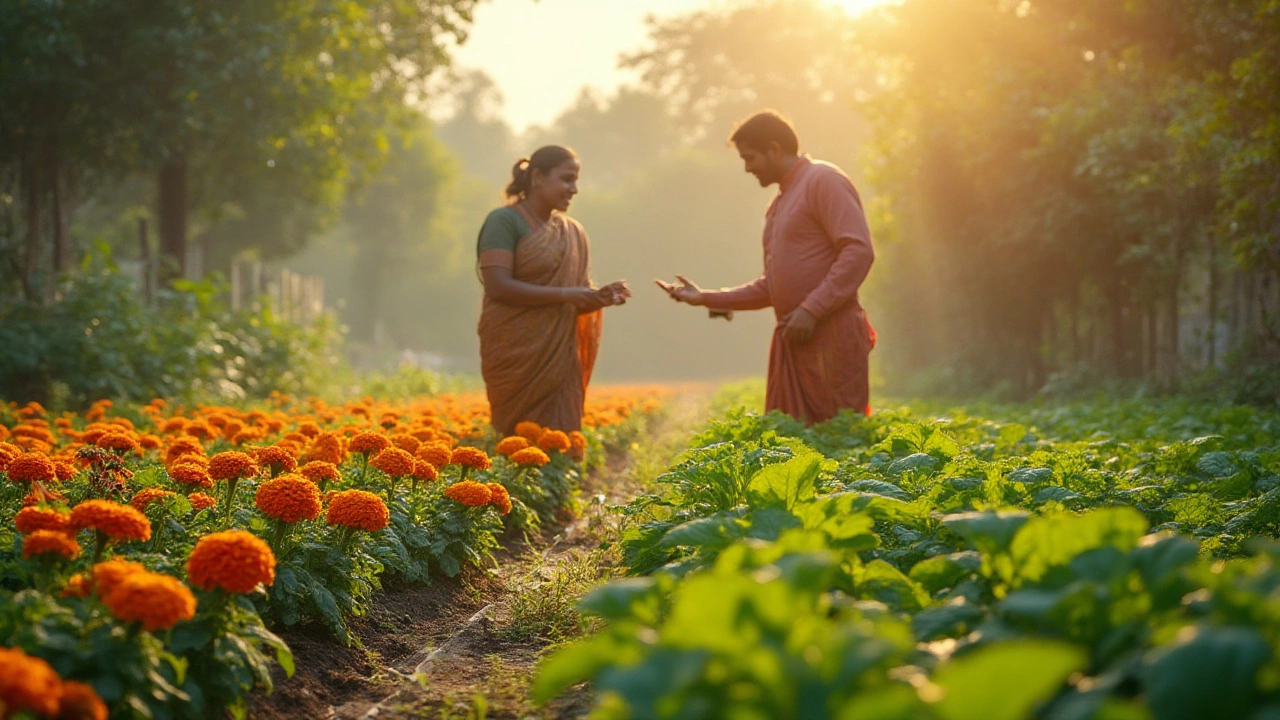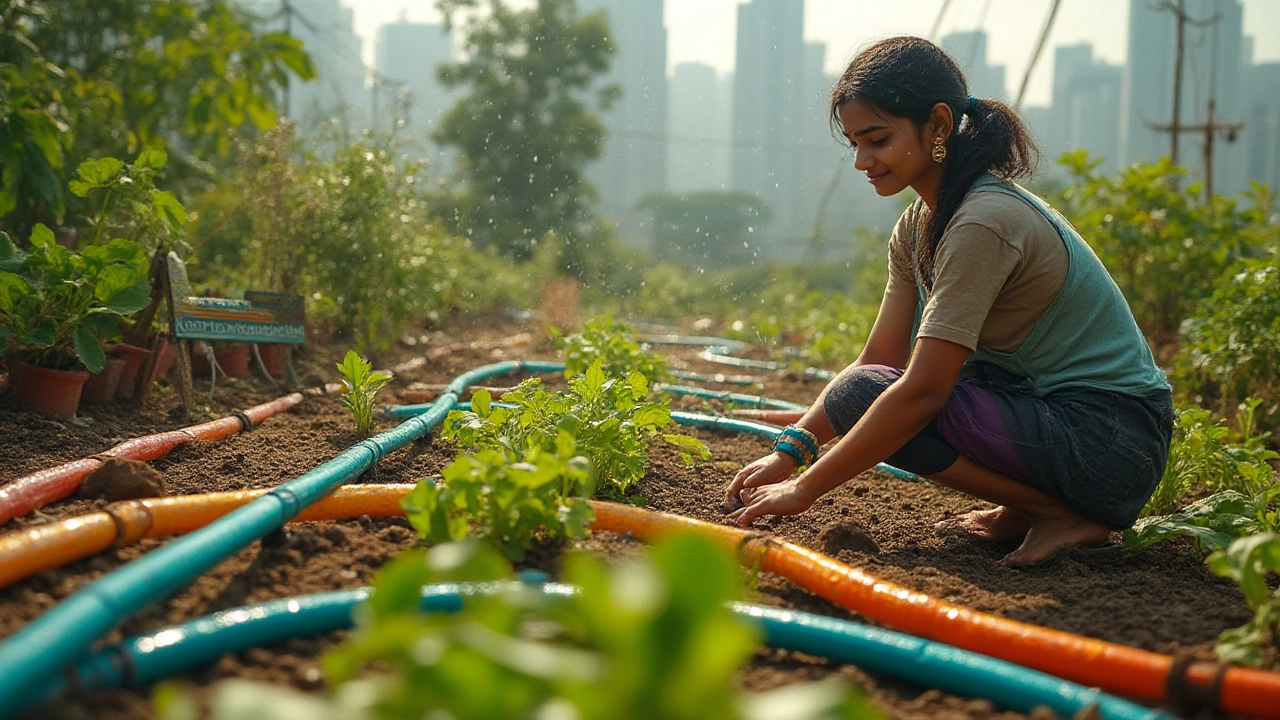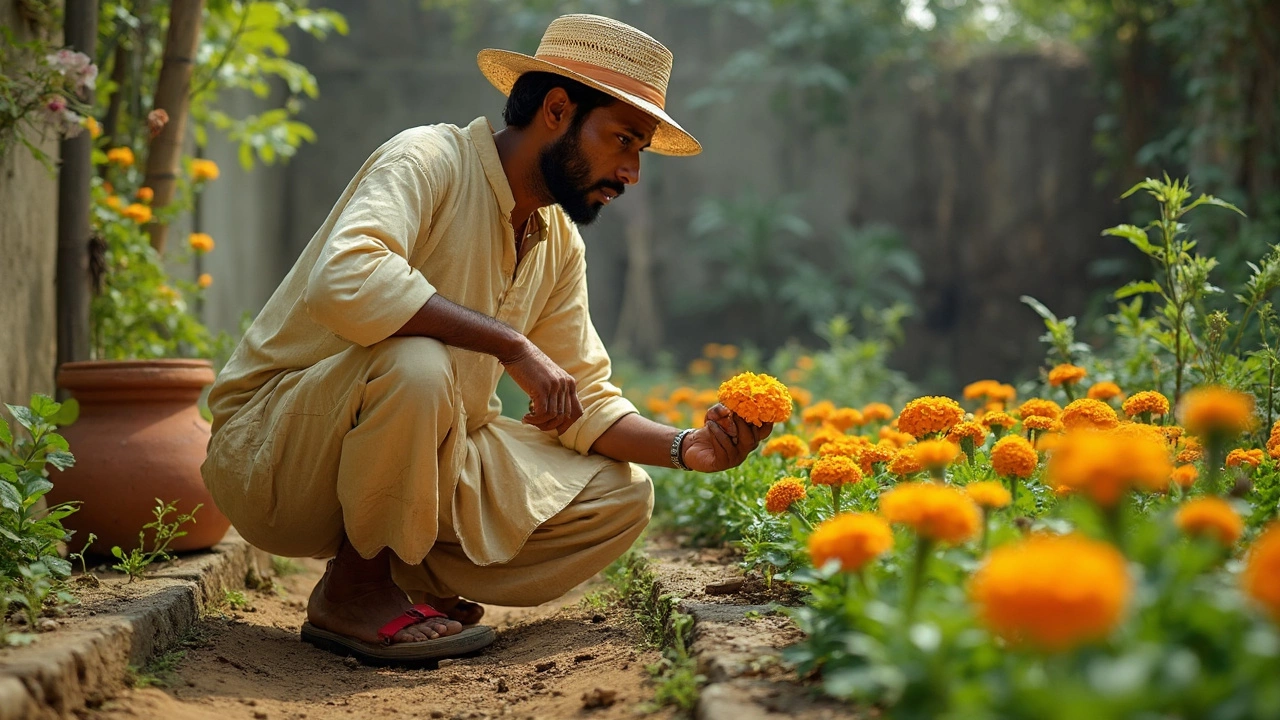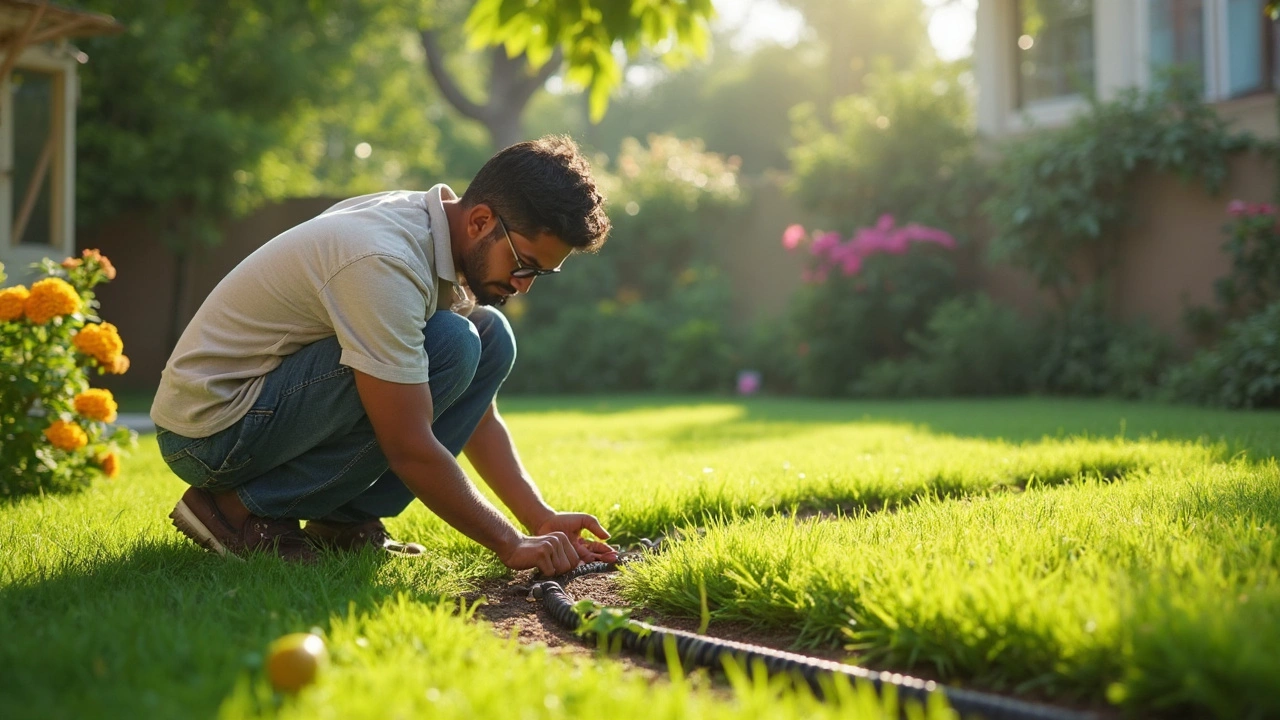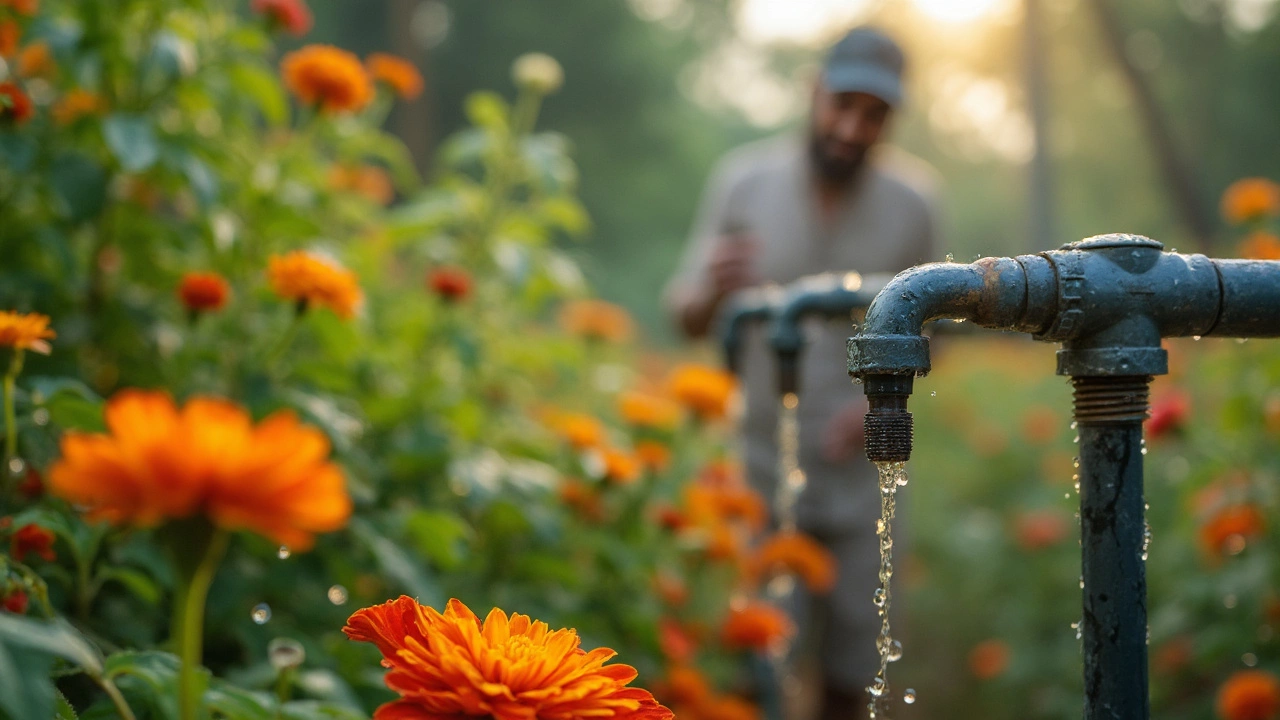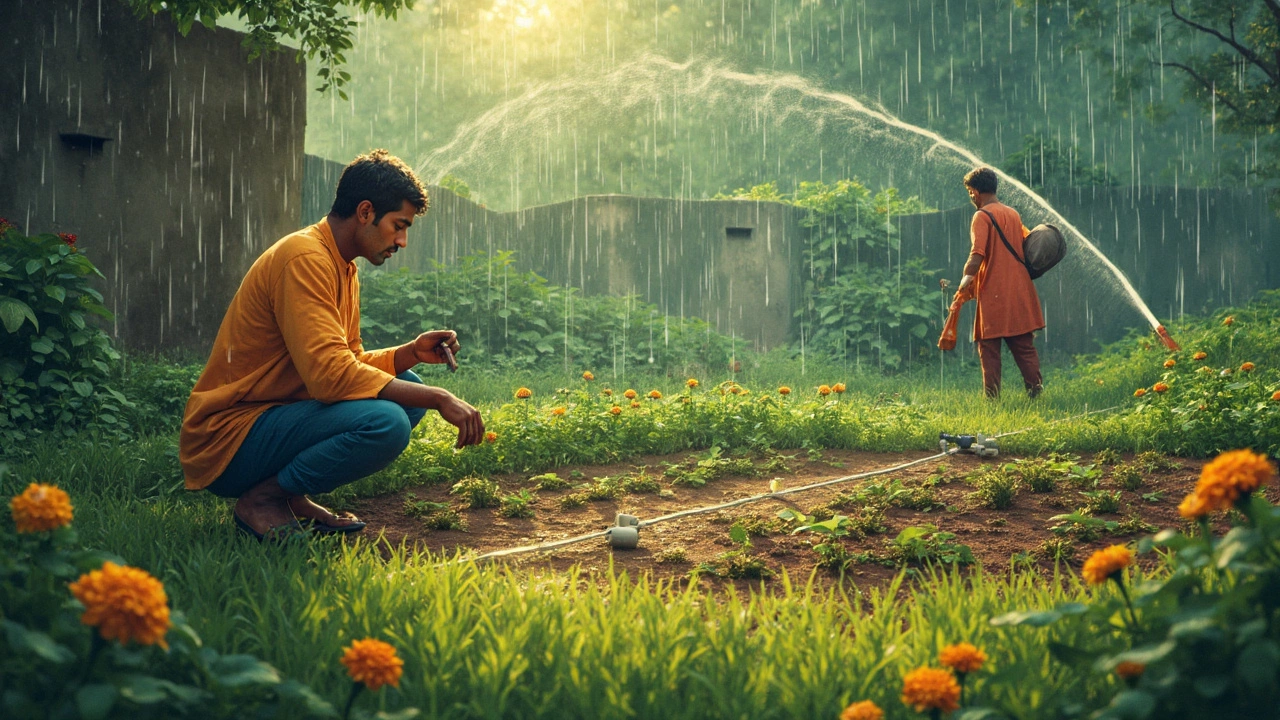Drip Irrigation Basics for Indian Gardens
Ever wonder why your garden looks thirsty even after you water it? The culprit is often over‑watering or uneven distribution. Drip irrigation solves that problem by delivering water right where the roots need it, saving both water and time. Let’s break down what drip irrigation is, why it’s a game‑changer in India, and how you can start a simple system this weekend.
Why Choose Drip Irrigation?
First off, it’s efficient. Traditional sprinklers waste up to 30% of water to wind drift and evaporation. A drip line releases water directly onto the soil, cutting that loss dramatically. In hot Indian summers, that means your plants stay hydrated longer without a constant refill.
Second, it’s gentle on plants. The low‑flow emitters prevent soil erosion and keep seedlings from getting washed away. For veggies like tomatoes or herbs that need steady moisture, drip irrigation mimics natural rainfall better than a splash from a hose.
Getting Started: Simple Steps
1. Plan Your Layout. Sketch your garden, mark rows, raised beds, or containers. Decide where each plant group sits and how many emitters each will need. A basic rule: one emitter per plant for small veggies, a double line for larger shrubs.
2. Choose the Right Tubing. Most Indian gardeners use ½‑inch polyethylene tubing. It’s cheap, flexible, and works well with pressure regulators. If you have a large plot, consider using ¾‑inch main lines to keep pressure steady.
3. Set the Burial Depth. Burying the drip line too shallow can expose it to sunlight and damage, while too deep reduces flow. Aim for 2‑3 cm below the soil surface in sandy loam and 4‑5 cm in heavier clay. This depth protects the tubing and ensures water reaches the root zone.
4. Add a Pressure Regulator and Filter. Indian water supply can be gritty; a filter stops clogging, and a regulator keeps flow consistent, especially when you’re using multiple lines.
5. Test and Adjust. Turn the system on and watch the emitters. If water pools or drips too fast, adjust the emitter size or add a flow‑control valve. Run the system early morning or late evening to reduce evaporation.
Once everything’s set, you’ll notice the soil staying moist longer. That means less watering trips and healthier plants.
Tip: Pair drip irrigation with a simple mulching layer of straw or dry leaves. Mulch reduces surface evaporation, keeps roots cool, and stops weeds from stealing your water.
Drip irrigation isn’t just for big farms. Small balcony gardens can use a mini‑drip kit to water herbs and strawberries. The same principles apply – low flow, close to the roots, and timed watering.
In India’s varied climates, adjust the watering schedule. In humid coastal regions, a couple of hours a week may suffice. In arid interiors, you might need 30‑45 minutes daily during peak summer.
Ready to give it a try? Grab a starter kit from any local agro‑store, follow the layout steps, and watch your garden thrive while you slash water bills. Drip irrigation is the smart, sustainable choice for any Indian gardener who wants more growth with less hassle.
Why Drip Irrigation Is Better Than Soaker Hoses for Your Garden
Drip irrigation delivers water directly to plant roots, saving water, reducing weeds, and improving yields compared to soaker hoses that waste water and promote uneven growth.
Drip Irrigation: Why Isn’t Everyone Using This Efficient Watering System?
Why do so many gardeners, farmers, and homeowners skip drip irrigation, even with its proven water savings? We dig into the roadblocks, mistakes, myths, and the real challenges holding it back.
Why Is Drip Irrigation So Expensive? Breaking Down the Real Costs and Saving Tips
Drip irrigation saves water but often comes with a hefty price tag. Explore what makes drip systems costly and learn actual ways to cut expenses without losing efficiency.
Drip Tape vs Drip Line: The Ultimate Guide for Efficient Watering
Confused about drip tape or drip line? Cut through the confusion with this 2025 hands-on guide, packed with real comparisons, practical tips, and clear stats for gardeners.
Main Types of Drip Irrigation: Surface vs. Subsurface Explained for Gardeners
Discover the key differences between surface and subsurface drip irrigation, with practical tips, real-life examples, and useful data for modern gardeners.
Drip Irrigation: Which Type Really Saves You Money?
Wondering which irrigation style won't empty your wallet? This article cuts through the fluff, digging into what makes drip irrigation systems cost-effective for both small and big gardens. Get real info on setup costs, ongoing expenses, and a few trade-offs most people don't talk about. Find smart ways to stretch your dollar even further, without sacrificing healthy, green results. If low-hassle and affordable is what you want, you'll get answers here.
Can You Mow Over Drip Irrigation? What You Need to Know
Wondering if it's safe to mow over drip irrigation pipes? This article clears up the risks and gives simple tips to protect your watering system while keeping your lawn in top shape. Learn how to spot trouble, prevent expensive repair jobs, and find the best way to set up your drip lines for mowing season. Get real solutions so you can stop stressing every time the grass gets tall.
How Many Drippers Can I Run on One Line? Drip Irrigation Limits Explained
Ever wondered how many drippers you can actually hook up to a single drip line before it all goes sideways? This guide breaks down the real limits with simple math, practical examples, and hands-on tips. Discover how flow rate, water pressure, and line length impact your setup. Learn the mistakes people make and how to dodge them, so your plants get the right amount of water every time. Set your system up the right way the first time, without the guesswork.
Underground Sprinklers: Are They Really Worth the Investment?
Wondering if underground sprinklers are worth the money and hassle? This article cuts through the hype, comparing underground sprinkler benefits with more hands-on drip systems. We’ll look at what setup really takes, water usage, maintenance headaches, and what actually helps your lawn or veggie patch. Get practical advice so you don’t waste time or cash on a system that doesn’t actually fit your needs.
Why Does My Drip Line Keep Clogging?
Clogged drip lines can ruin your garden's irrigation system. Understand the common causes of clogging, from debris and mineral buildup to poor filtration. Discover practical solutions to maintain clean drip lines, ensuring efficient water flow. Simple tips make a world of difference in preventing clogs and improving plant health.
Should You Bury Your Drip Irrigation System?
Drip irrigation offers an efficient way to save water and boost plant health, but the question remains: does it need to be buried? This article explores the pros and cons of burying drip irrigation systems, offering practical advice for gardeners. Learn why some choose to keep it above ground while others opt to bury it. Get tips on setting up your own system for optimal results.
Drip Irrigation Under Mulch: Is It Worth It?
Discover the perks of placing drip irrigation under mulch for your garden. Explore how this combination helps conserve water, improve soil health, and ensure efficient plant growth. Learn practical tips and reasons to consider this method for a more sustainable gardening experience.
- 1
- 2
About
Drip Irrigation
Latest Posts
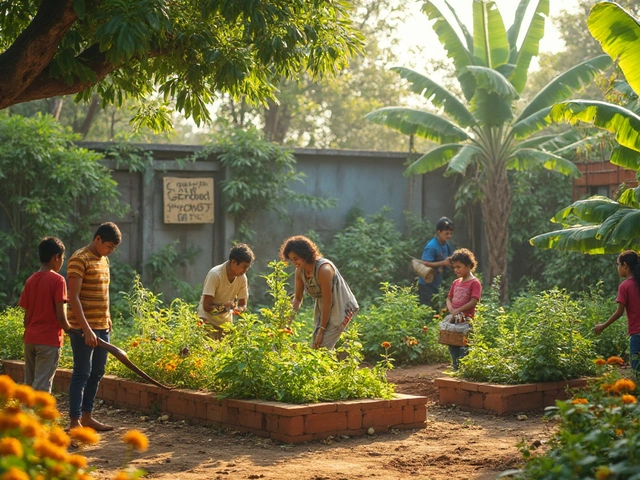
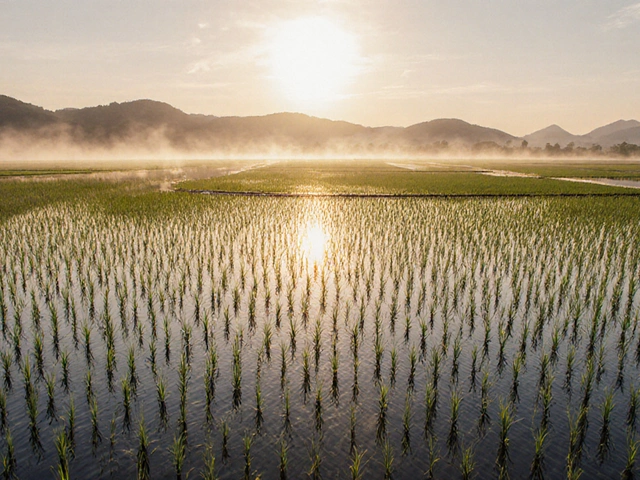
Ideal Land for Growing Rice: Best Soil Types & Conditions
By Alden Thorne Oct 19, 2025
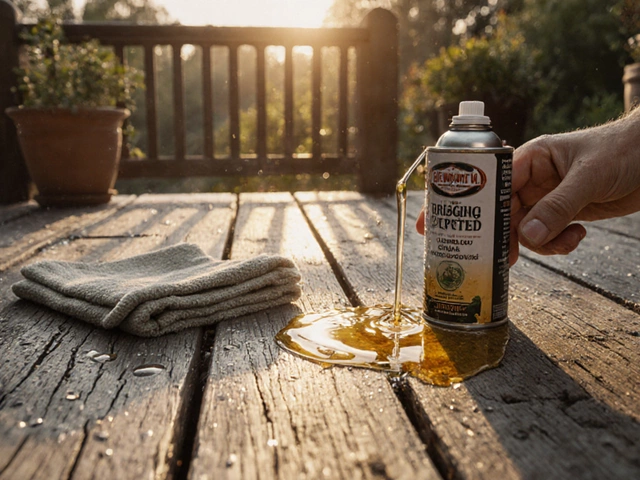
How Often Should You Oil Your Terrace? A Practical Guide for Lasting Wood Protection
By Alden Thorne Nov 16, 2025

Best Liquid to Water Plants: What Actually Works?
By Alden Thorne May 9, 2025


